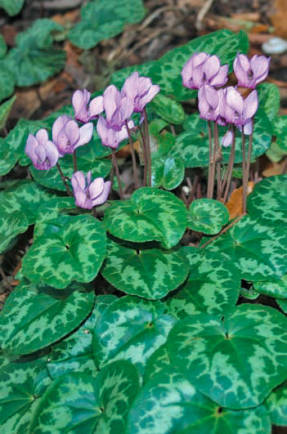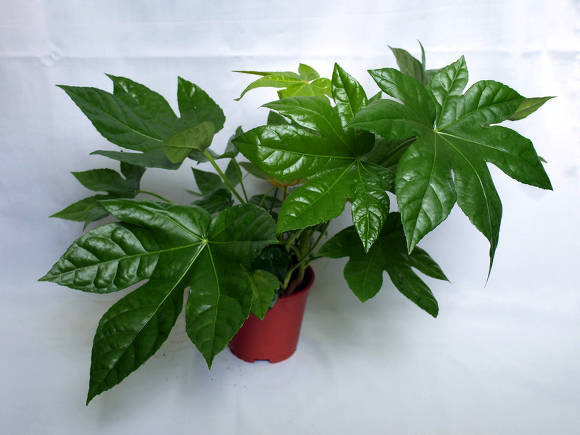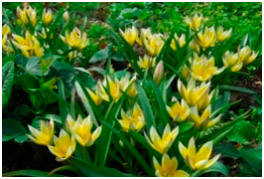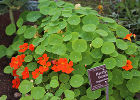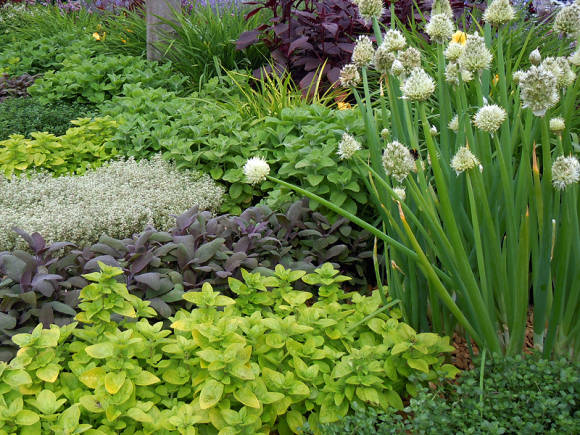
Morning glory sweet potato (Ipomaea batatas), plant of the bindweed family (Convolvulaceae), better known as a food crop - "sweet potato", and is widely grown in tropical, subtropical and parts of the temperate regions for the sake of tubers.
This plant comes from Central America and Mexico, where about half of all species of morning glory grow. Sweet potatoes have been used by Peruvians for a very long time, for 8000 years. He came to Europe thanks to Christopher Columbus.
Recently, the sweet potato Ipomoea has attracted attention as an unpretentious ornamental plant; it has become very popular in urban landscaping.
This plant grows up to 30 cm tall, lashes are capable of producing up to 1-2 m. Funnel-shaped axillary flowers of white-pink-lilac range are quite spectacular, like in many morning glories, but modern varieties are not capable of flowering. They are grown for large, up to 15 cm, beautiful foliage, hovering on long stalks, heart-shaped or palmate-lobed, in various shades - from green and yellowish to dark purple and reddish. More rare variegated varieties with white or pinkish markings on a green background of the leaf blade.
 |  |
 |  |
By nature, it is a perennial plant, but ornamental varieties are grown in temperate climates in an annual culture. Traditionally, morning glory sweet potatoes, like potatoes, are propagated by dividing the tubers into 2-3 parts with sprouts. In decorative varieties, they are much less, and in our country they do not always have time to fully develop, therefore, the main method of propagation is cuttings. For the first time, it is worth purchasing ready-made seedlings, and at the end of summer, cut the cuttings with two leaf nodes, which take root very quickly, within a few days. The obtained mother liquors are brought before frost (sweet potato is not cold-resistant at all) into a room with a temperature of about + 20 + 25 ° C. The plant tolerates indoor conditions well if there is enough light. In February-March, the shoots that have inevitably stretched out over the winter are cut again to obtain their own seedlings.
 |  |
The sweet potato is planted in the open ground after the danger of return frosts has passed, in late May - early June. It can serve as an excellent ground cover plant in medium dry, drained slightly acidic soils. The stems grow to the sides, rooting in the nodes, but you can lift them and fix them on a low support, for example, in the form of an obelisk. Although this is often not done, they use the plant as an ampelous plant, in containers and hanging baskets, pinching for greater foliage.
The variety of modern varieties that emerge one after the other makes it possible to create magnificent combinations of morning glories with different shapes and colors of foliage, for example, set off each other with solid yellowish green and cut purple. And the best companion in a hanging composition for a dark morning glory will be a petunia of purple or pink color. Light, delicate and drought-resistant plants - euphorbia "Diamond Frost", bidense ferulele, lobularia, large-flowered purslane and architectural grasses will perfectly balance the large foliage of morning glory. However, nothing limits your imagination here, the main thing is to provide the plants with enough sun and moderate watering.
 |  |
 |  |
| Photo: Wolfschmidt Samen & Jungpflanzen (Germany) |
Ornamental varieties of morning glory sweet potatoes also form tubers, but they are inferior in size and taste to vegetable varieties. Interestingly, there are vegetable varieties not only with purple foliage, but also tubers intensely colored from the inside with anthocyanin - they are bred in Japan and are considered the most useful because of their pronounced antioxidant properties. They are used to produce a natural colorant for juices, jams, drinks, pasta, bakery and confectionery products. The same applies to tubers with yellow, orange flesh, rich in carotene.
Those who like to taste everything by the tooth may like juicy young leaves and stems in salads. The milky juice contained in all parts of the plant is bitter, so before putting the greens in the salad, you should soak it in water or hold it in boiling water for half a minute, and then pour it over with cold water. It has a pleasant sour taste, is a good source of calcium, phosphorus, magnesium, potassium, protein, vitamins K, A and folic acid, lipids, phenolic compounds, and is useful for the prevention of cardiovascular diseases. Chinese herbalists believe that sweet potato leaves can improve respiratory and kidney function. So this plant can be considered a useful and nutritious ornamental vegetable.
Photo by Rita Brilliantova, Lada Anoshina and from the GreenInfo.ru forum

